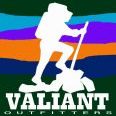The Best Ham Radio for Beginners [FREE DOWNLOAD – Tips for Passing the Ham Radio Exam]
Amateur Radio, Technician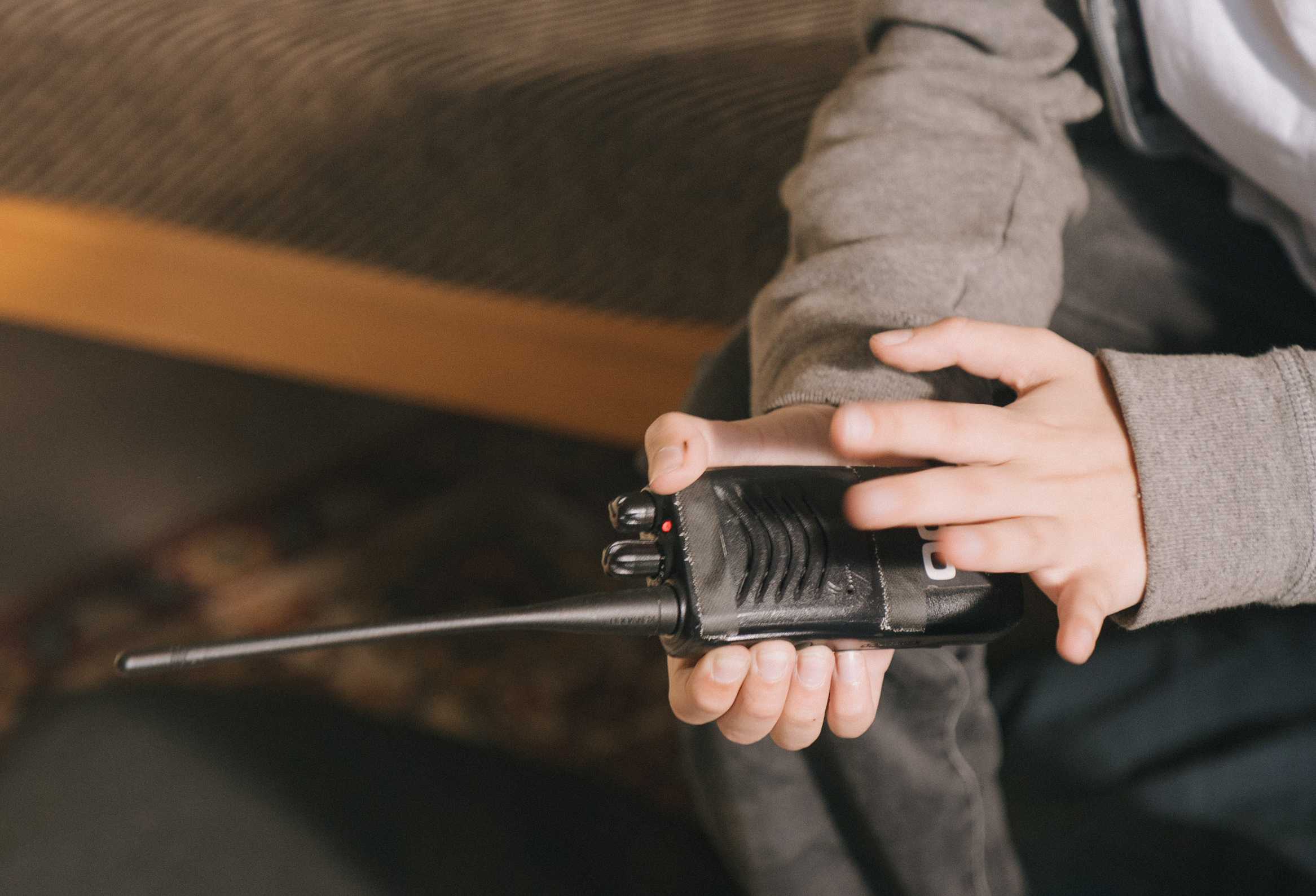
Congratulations, you just passed your FCC Technician Class exam! Now, what is the best ham radio to get you on the air? Here are my suggestions for the best ham radio for beginners; the ham radio that will get you on the air in minutes; that will have you talking to people as in your neighborhood and as far away as, well, the other side of the world and even out of this world.
A primary rule of survival bushcraft is “the tool you have is better than the tool that you don’t have.” There are as many opinions about which is the best ham radio for beginners as there are ham radio operators. My first bit of advice is, the radio you have is the best one to use. If you have one that is capable of reaching your local repeater, then that’s the best ham radio for beginners. Don’t get too wrapped up in the latest, greatest, Ginsu knife of radios. Your stable of radios will grow.
Another primary rule is, “your pack might be full, but there’s always room in your head.” There are a lot of ham radio beginners that outkick their coverage. They think that the most expensive radio with the most features is the best ham radio for beginners. They plunk down hundreds of dollars for a radio that is full of features, only to give up using it because it’s beyond their skills. The best ham radio for beginners is the one that fits their skills. More capabilities in the radio will never match more capabilities acquired through experience. A radio that is too complex is too difficult to use. And a radio too difficult to use quickly becomes an expensive paperweight. Actually using a radio that is fun to use will increase your skill. When your skill increases, it becomes obvious when and how to upgrade your gear.
Most of us in the Valiant Outfitters family are preparing for a worst-case scenario. In worst-case scenarios, simple is better. The more complex any piece of equipment is, the more failure points it has. In a crisis, failure points can be fatal.
All a radio needs for useful two-way communication is a receiver, transmitter, and antenna: three failure points. Adding a TNC, a GPS, external mic, touch-screen, etc. introduces additional failure points. Yes, those things add functionality, but what we’re looking for here is the best ham radio for beginners; the one beginners will experience success with. We want the best ham radio for a beginner to get on the air quickly and one that a beginner can use under duress without an advanced skill set. We want a radio that might have some nice additional features, but at its core is easy to use for basic communication and at a reasonable price point.
Caveat: This post won’t drill down deeply in explaining the different features, technologies, specifications of each radio. It will be a quick overview designed to give advice on purchasing the best ham radio for beginners. With the exception of FM digital modes, radio technology is pretty flat and easily understood by any ham who studied properly for their license exam.
Curious to know which radio is “The Best Ham Radio for Preppers?” Check out my guest blog post at Creek Stewart’s Willow Haven Outdoor website.
The Best Ham Radio for Beginners
Yaesu FT-70DR
For those of you that hate drama, here it is. My pick for the best ham radio for beginners. All things being equal, I think this is the best place to start for beginner ham radio operators.
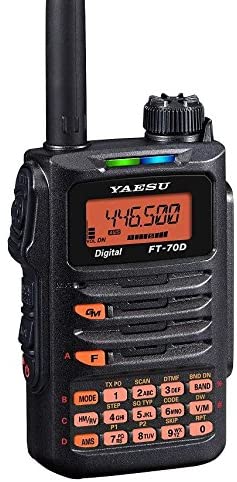
Chances are that beginner hams are limited to VHF/UHF privileges with a smattering of HF most notably on 10 meters, which is next to useless right now because of the low sunspot numbers. One of the things I really like about the FT-70DR for the beginner ham is that it hits the basics of utilitarian VHF/UHF communication around town, but includes some of the romance of contacting international hams without the added cost and complexity of HF. No, it’s not true DXing, but that can come later with more experience and pennies.
At its heart the FT-70DR is a great basic radio at a thrifty price. It’s a 5 watt, dual-band transmitter (144 – 148 MHz & 430 – 450 MHz), wide-band receiver (108 – 579.995MHz), rugged (IP54) work horse. (Click here for a great explanation of the IP rating guide.) The FT-70DR hits all of the frequencies necessary for local emergency communication service, listening to NOAA WX radio, scanning many first responder VHF frequencies, and working satellites. All of this at a sub-$200 price point is pretty good. But this in of itself isn’t extraordinary. Most dual-band ham handheld radios (HTs) hit these same points.
What sets the FT-70DR apart is the added value of C4FM (Fusion) capability. Yeh-yeh, I know, “But Joe, you just added a failure point!” I’m not recommending the 70DR as the ultimate bugout bag/prepper/ecom radio. I’m recommending it as the best ham radio for beginners. Would I use it in a bugout bag or go-kit? Heck yea. In fact, I own one and wouldn’t hesitate to take it on deployment. (In full disclosure, I don’t use it for deployments, though. My personal go-to deployment radios are all older dual-banders because I don’t mind treating them as “disposable. But one day my 70DR will be an “older” radio that I don’t mind losing.)
It’s this added value of C4FM that allows the beginning ham to taste DX. There are several paths (Fusion/C4FM, D-Star, DMR) for the beginning ham to add to their skill set at this point. Fusion system radios can access the world using WIRES-X (Wide-coverage Internet Repeater Enhancement System). It’s not true DXing, and certainly doesn’t count for DXCC, but it’s a wonderful gateway drug to the increased HF privileges of General and Amateur Extra class licenses. Once you’ve experienced talking with a ham on the other side of the world you’ll never be quite satisfied with sharing slow-cooker recipes on the local 2 meter repeater.
There’s also the option of adding a Fusion hot spot to your home radio shack. You can be grilling steaks in the backyard with your trusty FT-70DR in one hand and your favorite frosty beverage in the other and chat with some Aussie throwing some shrimp on the barbie. Your radio talks to the hotspot, the hotspots talks to the interwebs, and voila…DXing lite.
Why Fusion and not D-Star? Fusion is more intuitive and with better sound quality. Also, Fusion radios are generally less expensive. That was pretty easy.
Why Fusion and not DMR? This is where I’m gonna get dinged because the choice isn’t as clear cut as between Fusion and D-Star. For the price point, I love DMR. There are some great sub $150 DMR radios. But Fusion wins over DMR for sound quality and the existence of mixed mode repeaters. In short, the repeater recognizes the signal as either analog or digital and re-transmits it accordingly. D-Star doesn’t have this feature, at all. DMR does, but with limitations.
What don’t I care for about the FT-70DR as the best ham radio for beginners?
First, it takes two hands to set the volume. The only rationale that I can find for this is to avoid accidentally bumping the volume knob when wearing on a belt.
Next, the programming sequence is a bit kludgy. It’s sort of like Twister for your fingers. Along with that, the menu system isn’t very user-friendly, but it isn’t on any radio, so this is somewhat of a wash. The operating manual comes in hard copy, but be sure to download the “Advance Manual.”
Finally, there’s a trickle drain on the battery while the radio is off. Everything is fine if you charge the battery for immediate use, but if you charge the battery and leave it in an unpowered FT-70DR it will be dead in a few days.
In the not a deal breaker category: Yeasu advises against using CHIRP to program the FT-70DR. Yeasu’s ADMS10 programming software is free, so that’s another wash. How is this a problem? Linux and OSX users are out of luck with computer programming because ADMS10 doesn’t work in Wine.
Caveat: If there’s not a Fusion repeater in your area, then you’ll need to add a hotspot to your shack in order to take advantage of the WIRES-X capabilities of the FT-70DR.
Please see the bottom of the post for more detailed FT-70DR specifications.
The Best Ham Radio for Beginners
[Honorable Mention #1]
Yaesu FT-60R
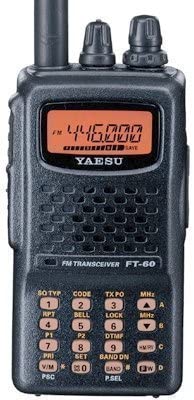
For a rugged, name brand, reasonably priced ham radio for beginners it’s hard to beat the Yaesu FT-60R. In fact, the FT-60R has become ubiquitous as an entry level handheld. It’s also the go-to prepper/bugout bag/ecom radio for thousands of hams. The only thing that keeps the FT-60R from being the best ham radio for beginners is the lack of a digital mode. If you have absolutely no interest in digital communication and want to save about $75 or so, then the FT-60R is for you.
What the FT-60R lacks the FT-70DR’s digital modes, it makes up for by not requiring triple jointed digits to program. The most common features (tuning, volume, squelch) are all accessible via physical buttons and knobs.
It also takes a beating. Like the FT-70DR the FT-60R’s IP rating is 54 against water and dust.
As if that’s not enough, and you would think that it is, the FT-60R plays Beethoven’s “Ode to Joy” right before automatic power off. How cool is that?
Please see the bottom of this post for a more complete list of FT-60R features.
The Best Ham Radio for Beginners
[Honorable Mention #2]
BF-F8H
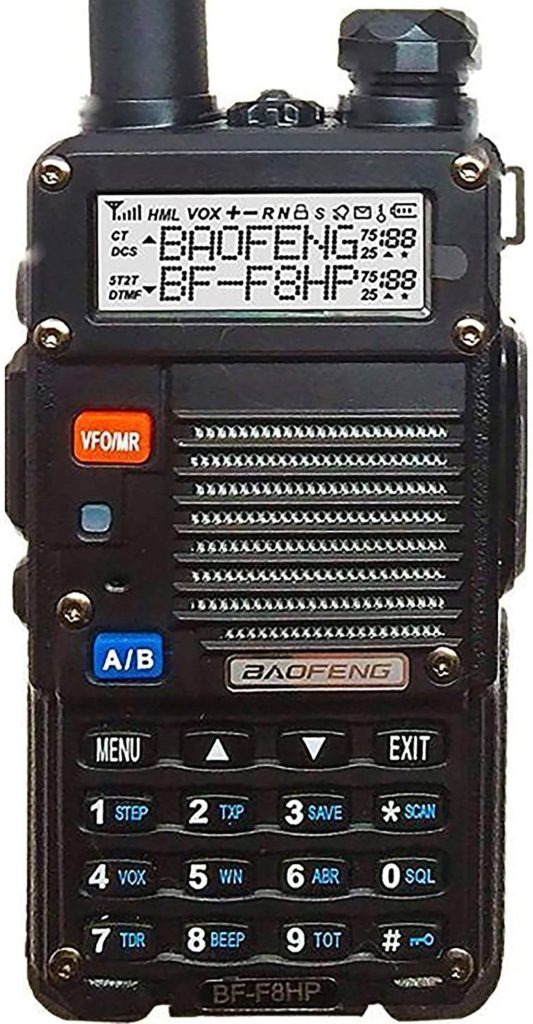
Yep, the BaoFeng gets a mention. Really, how could it not? The BF-F8H is the 3rd generation in the UV-5R line of walkie-talkies. It has all the basic features of the FT-60R (dual-band, wide-receive), with an 8 watt transmitter, to boot. And like the FT-70R, it’s an adventure to program.
No, I’m not really putting BaoFeng in a class with Yeasu, Icom, and Kenwood. The manufacturing tolerance and durability of these little Chinese radios doesn’t come close to the big three. But BaoFengs work and they’re cheap.
And that’s why they get an honorable mention. At half the price of “name-brand” radios, BaoFengs are basically disposable. They even come in packs of two, three, or four. Keep in mind that families will need someone at the other end of the radio waves to talk to. So, for the price of one FT-70DR you can buy two BaoFengs.
But, I wouldn’t depend on a BaoFeng in a worst-case scenario. They don’t last. When my kids were little we bought a new school backpack from a big box store every fall. Then we caught a clue and bought LL Bean backpacks. Yes, the LL Bean backpacks cost two or three times more, but my kids are in their twenties and thirties and they still use those backpacks. You can buy two or three BaoFengs for the price of one FT-70DR, but a BaoFeng will need to be replaced multiple times of the life-span of a FT-70DR or FT-60R. That’s not a problem when the sky is sunny and bright. Just buy another BaoFeng. But when civilization breaks down, so will Amazon.
Joking aside, the BF-F8H is a good radio at the price point. I’ve owned several UV-5Rs, and still do. I throw one in my wife’s glove box, carry one in my EDC backpack, bring extras to events to loan to hams who forget theirs. I’m sure that I’ll buy an F8H or two in the future.
Bonus: Best Everyday Carry Ham Radio for Beginners
Pick one. I’d choose any of these radios for my EDC carry. In fact, I already swap between a BaoFeng and a FT-70DR in my EDC/bugout bag depending on my mood. If you’re going to carry either of the Yaesus, then I strongly encourage you to purchase a case.
What is My Favorite Brand of Ham Radio?
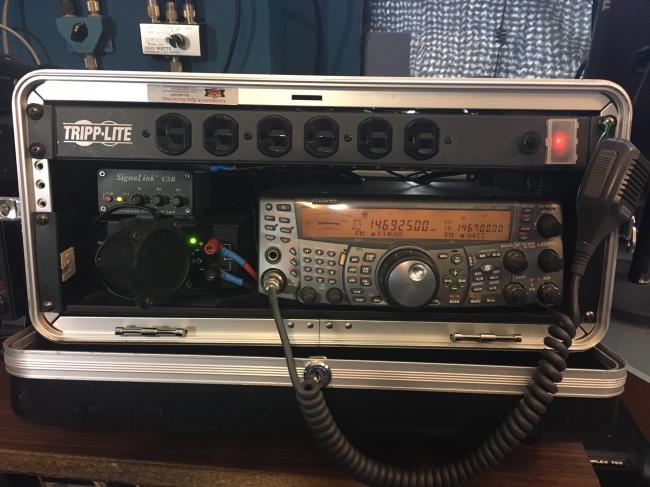
It might seem like Yaesu is my favorite brand of ham radio. Not necessarily. I own Kenwood, Icom, and Yaesu radios. Visit any ham radio review site and you’ll see four to five-star rating for every one of the big three. Ham radio technology is mature enough that it’s really hard to screw it up. Any beginning ham radio operator will do well to buy from any of the major players.
How About the Best HF Ham Radio for Beginners?
That’s another blog, stat tuned. Very few beginners have HF privileges and the HF radio field is much more crowded. Also, I’m a big proponent of purchasing used radios to save money and HF radio is a great place for used gear.
Now You’re Ready to
Buy the Best Ham Radio for Beginners
Valiant Outfitters is a participant in the Amazon Services LLC Associates Program, an affiliate advertising program designed to provide a means for sites to earn advertising fees by advertising and linking to Amazon.com.
What does that mean? It means that I receive a small percentage of each sale through the links that I provide. How do I choose the links? First, I choose the best product. Then, I find the best provider on Amazon to share with my readers.
Not a fan of Amazon? Gigaparts (www.gigaparts.com) is a great place to shop. If you use their online Product Expert chat, ask for Scott. He and I have worked together for years over many hurricane deployments and has helped as technical consultant on this article. (I don’t receive any compensation of any type from Gigaparts.)
If you buy the FT-DR, please look me up via WIRES-X. I’d love to chat.
We outfit for live, no limits.
Bonus: Programming with Chirp
Here’s a great tutorial by Josh Centers on how to use CHIRP to program your radios with your computer https://theprepared.com/gear/guides/program-ham-radio-chirp-software/
FT-70DR Specifications
- System Fusion Compatible
- FM Friendly Digital Operation with AMS (Automatic Mode Select)”
- Sophisticated C4FM Digital Functions : Digital Group Monitor (GM) / DG-ID, DP-ID Operation*1
- *1 DG-ID: Digital Group Identification, DP-ID: Digital Personal Identification
- 5 Watts of Reliable RF Power inside a Compact body”
- 700 mW Loud Audio Output and Clear Voice”
- Large Multi-Color Mode Indicator
- Rugged Construction Meets IP54 (Dust / Water protection)
- Huge 1,105 Channel Memory
- Wide Band Receive Coverage 108 – 579.995 MHz
- Versatile Scanning Capabilities: Programmed VFO Scan, Memory Scan, Priority Channel Scan
- WX Channels with “Severe Weather” Alert (US version)
- 7.4 V 1,800 mAh Lithium Ion Battery pack (SBR-24LI) Included
- Equipped with External DC Jack for DC Supply and Battery Charge
- Equipped with Mini USB port for Convenient Memory Management and Software updates
- Transceiver-to-Transceiver Cloning with Optional Cloning Cable (CT-27)
- CTCSS/DCS Operation
- RF Squelch
- Automatic Power-Off (APO) Feature
- Transmitter Time-Out-Timer (TOT)
- Busy Channel Lock-Out (BCLO)
Supplied Accessories:
- Antenna
- 7.4 V 1,800 mAh Lithium Ion Battery Pack (SBR-24LI)
- Battery Charger (SAD-25)
- Belt Clip
- USB Cable
- Warranty Card
- Operating Manual
Frequency Ranges:
- RX 108 – 137 MHz (Air Band)
- RX 137 – 174 MHz (144 MHz HAM)
- RX 174 – 222 MHz (VHF1)
- RX 222 – 420 MHz (VHF2)
- RX 420 – 470 MHz (430 MHz HAM)
- RX 470 – 579.995 MHz (UHF band)
- TX 144 – 148 MHz
- TX 430 – 450 MHz
Circuit Type: Double-Conversion Superheterodyne
Modulation Type: F2D, F3E, F7W
RF Power Output: 5 W/2 W/0.5 W (@7.4 V or EXT DC)
AF Audio Output: 700 mW (@16 ohms 10 % THD: Internal speaker)
Case Size (W x H x D): 2.36” x 3.86” x 1.3” (60 x 98 x 33 mm) w/o Knob and Antenna
Weight (Approx.): 8.99 oz (255 g) with SBR-24LI and Antenna
Warranty: 3 Years
FT-60R Features
- Over 1000 Memory Channels w/Alpha-numeric Labels
- Ten Memory Banks for Channel Allocation
- High Power Output: 5 Watts
- Long-life FNB-83 (7.2 V/1400 mAh) and Overnight Charger included
- CTCSS and DCS Encode/Decode, with Split Tone and DCS Encode-only Capability
- One-Touch NOAA Weather Access
- NOAA Severe Weather Alert with Alert Scan
- Nine DTMF Auto-Dialer Memories
- Two Front Panel Programmable Keys
- Convenient Access Key for Vertex Standard’s WIRES™ (Wide-coverage Internet Repeater Enhancement System)
- RF Squelch (only passes signals exceeding programmed level)
- Mono-band and Memory-only Operating Modes
- Rugged Die-cast, Water-resistant Case Construction
- Huge LCD Display
- Transmit Time-Out Timer (TOT) and Automatic Power-Off (APO)
- Automatic Repeater Shift (ARS)
- YAESU’s exclusive ARTS™ (Auto-Range Transponder System) which “beeps” the user when you move out of communications range
